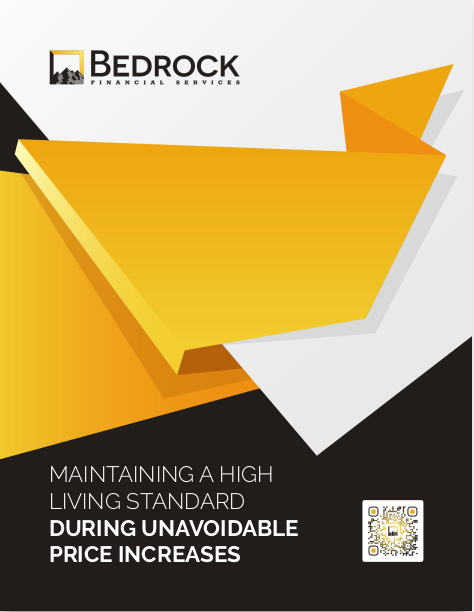Key Takeaways
-
Most clients have emotional, lifestyle, and legacy-driven goals for retirement that go unspoken unless you know how to ask.
-
A truly effective retirement plan must go beyond spreadsheets—it must account for fears, desires, family dynamics, and flexibility.
The Real Retirement Plan Clients Are Imagining
When clients say they want a “comfortable retirement,” they rarely mean the same thing. As a financial professional, you may map out a plan based on numbers: withdrawal rates, inflation projections, tax efficiency. But your client may be thinking about avoiding being a burden on their children, spending more time in nature, or finally learning to paint.
Understanding this gap is key. Clients often hold back on their true goals, not because they’re hiding something, but because they’re unsure those goals belong in a financial conversation. Your job is to show them they do.
Why Clients Don’t Share What Really Matters
Several psychological and practical barriers prevent clients from opening up about their deeper retirement wishes:
-
Fear of being judged for what they want (e.g., retiring early, spending big on hobbies, or moving abroad).
-
Assumption that it’s not relevant to the financial plan.
-
Uncertainty about the future, making it hard to articulate anything beyond “don’t run out of money.”
-
Trust takes time, and not every client opens up in the first meeting—or even in the first year.
Knowing this, your approach must be built for uncovering what clients won’t say upfront.
How to Start the Right Conversations
If you want clients to reveal their true retirement hopes, your questions need to go beyond numbers:
-
“What would an ideal day look like for you in retirement?”
-
“What worries you most about growing older?”
-
“Are there any experiences or places you’ve always dreamed of?”
-
“How do you want to be remembered by your family or community?”
These questions open the door to discussions around legacy, lifestyle, and identity—three pillars that influence client decisions more than they admit.
The Quiet Influence of Family Expectations
In 2025, more retirement plans are being shaped by multigenerational factors. Clients are:
-
Supporting adult children or grandchildren
-
Providing informal caregiving to aging parents
-
Planning to leave behind property, money, or family businesses
Yet few will state this outright. Instead, you’ll hear clues like:
-
“My daughter might need some help in the future.”
-
“We may need to move closer to family eventually.”
-
“We’re not sure what to do with the house.”
Listen carefully to these comments—they’re not side notes. They’re central to the plan.
Lifestyle-Driven Retirement Planning Is the Norm Now
Retirement in 2025 isn’t about stopping work. It’s about reshaping life. Many clients envision:
-
Working part-time on their own terms
-
Traveling periodically, not permanently
-
Investing time in creative or volunteer pursuits
-
Maintaining strong social circles for mental wellness
Clients won’t always label these as “financial goals,” but they influence everything from spending patterns to withdrawal timing to healthcare choices. Unless you prompt the conversation, they may never bring them up.
Longevity Isn’t Just About Outliving Assets
Thanks to medical advances and better awareness, many clients now expect to live into their 90s. But longevity brings challenges:
-
Cognitive decline
-
Shifting health needs
-
Housing transitions (e.g., downsizing, assisted living)
-
Loss of a spouse
While many clients won’t say it directly, there’s often a fear of losing independence. That fear needs to be addressed with dignity—and with practical strategies.
Your retirement planning process must include:
-
Long-term care contingencies
-
Health-related financial buffers
-
Estate planning coordination
-
Conversations about living arrangements as needs evolve
Income Stability Still Matters—But So Does Flexibility
Traditional fixed-income strategies still appeal to clients. But so does the ability to pivot:
-
Clients want to know they can splurge one year and hold back the next.
-
They want to help family in emergencies without wrecking their plan.
-
They want to delay RMDs or Roth conversions if needed.
In 2025, flexibility isn’t just a feature—it’s a necessity. You need to build plans that allow for changes in spending, taxes, and life events.
Most Clients Don’t Understand Sequence Risk—But They Feel It
While your clients may not know the term “sequence of returns risk,” they feel uneasy about retiring into a volatile market. Especially those nearing their mid-60s right now.
This unspoken anxiety shows up as:
-
Delaying retirement unnecessarily
-
Hoarding cash instead of investing
-
Becoming overly conservative with portfolios
You can address this by showing how their plan holds up in multiple market conditions—and more importantly, by building buffers such as:
-
Cash reserves for 1–2 years of income
-
Diversified sources of withdrawals
-
Glidepaths that reduce risk gradually
Social Security and Medicare Aren’t as Reassuring as They Once Were
Even though both programs remain central to most clients’ retirement strategy, confidence in government support systems has eroded. Many clients:
-
Underestimate how much income Social Security will provide
-
Overestimate Medicare’s coverage
-
Fail to plan for rising healthcare costs (which continue to outpace inflation)
Help clients understand the timelines:
-
Medicare starts at 65, but enrollment decisions begin earlier.
-
Social Security claiming age can vary from 62 to 70, with consequences.
-
Delaying benefits may increase income—but only if health and other assets allow it.
Clients Want to Feel Prepared—Not Just Advised
In 2025, financial literacy is higher than it was a decade ago, but confidence hasn’t caught up. Many clients want:
-
To know what documents to store and update
-
To have a clear action plan for the next five years
-
To feel like they’ve stress-tested their retirement
-
To understand “what-if” scenarios without panic
That means your retirement process must include education, organization, and follow-through—not just annual reviews and portfolio rebalancing.
It’s Not Just About the Client—It’s About the Couple
If you’re working with married clients or long-term partners, know this: their retirement dreams often diverge more than they realize.
One partner may:
-
Want to retire at 62, while the other prefers 67
-
Imagine world travel, while the other wants to stay local
-
Worry about outliving the money, while the other feels overly confident
Unless you create space for both perspectives, the plan will feel unbalanced. Invite each partner to speak individually before merging into joint sessions. This will often reveal hidden concerns or unspoken assumptions.
Revisiting the Plan Isn’t Optional Anymore
In the past, retirement plans might have been reviewed once a year. In 2025, that’s not enough. Economic shifts, tax laws, market trends, and family events all demand a more agile strategy.
You need to:
-
Set up twice-a-year reviews or trigger-based check-ins
-
Monitor for new legislation (especially on RMDs, Roth rules, and tax brackets)
-
Update plans for lifestyle and health changes in real-time
A flexible, living retirement plan gives clients confidence even when the world changes fast.
Retirement Planning Should Reflect the Whole Person
Ultimately, retirement isn’t a number—it’s a phase of life. Your clients may not say this in so many words, but they’re hoping you’ll see the full picture:
-
What they fear
-
What they love
-
Who they’re responsible for
-
What they hope to leave behind
When you build retirement plans around these insights, you create deeper trust, longer relationships, and better results—for both of you.
And that’s where we can help. At Bedrock Financial Services, we offer tools, automation, and strategic resources that let you focus more on understanding your clients—not just managing their accounts. When you sign up with us, you get support that’s aligned with what really matters in this profession: relationships, clarity, and long-term impact.







